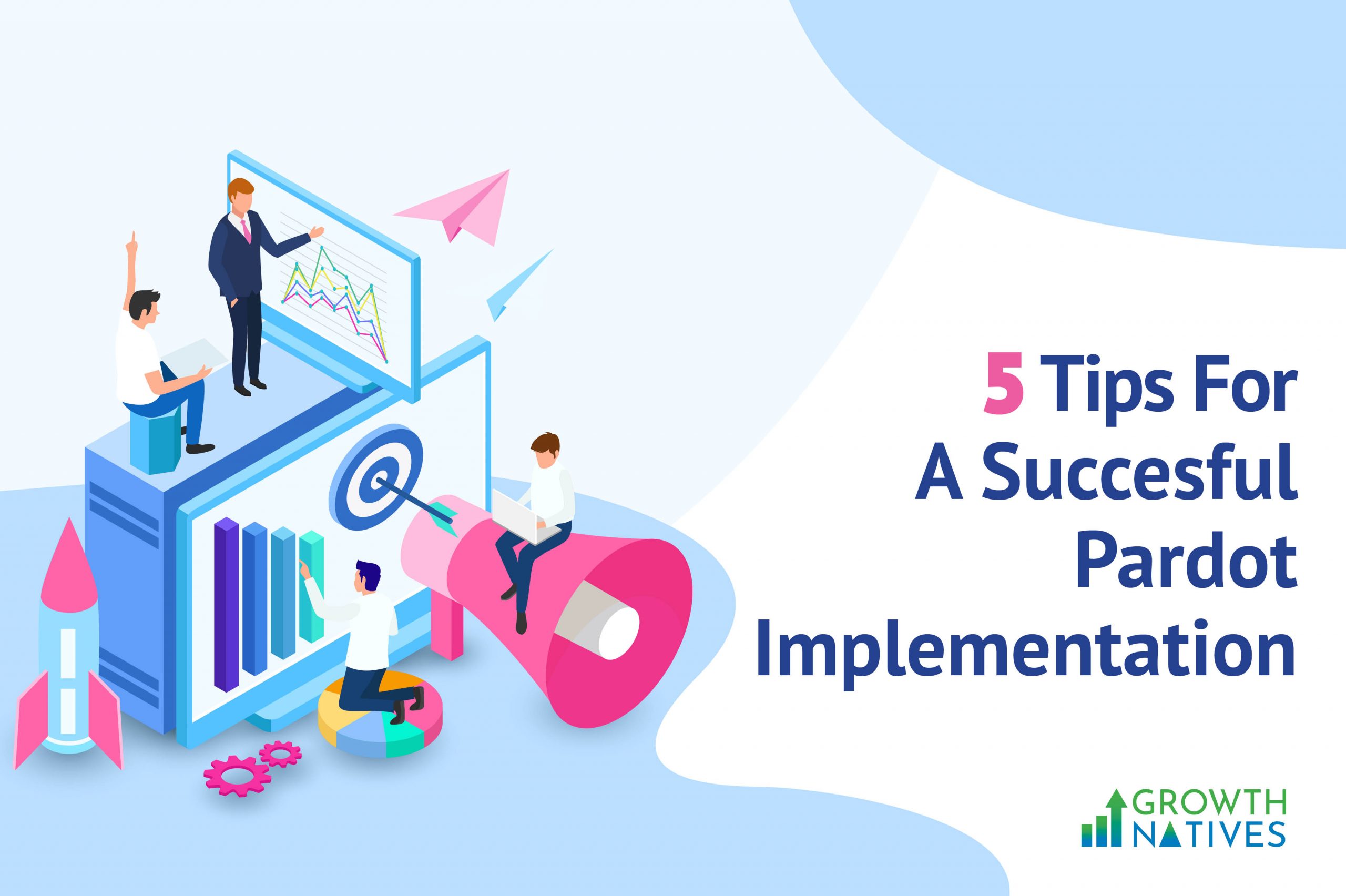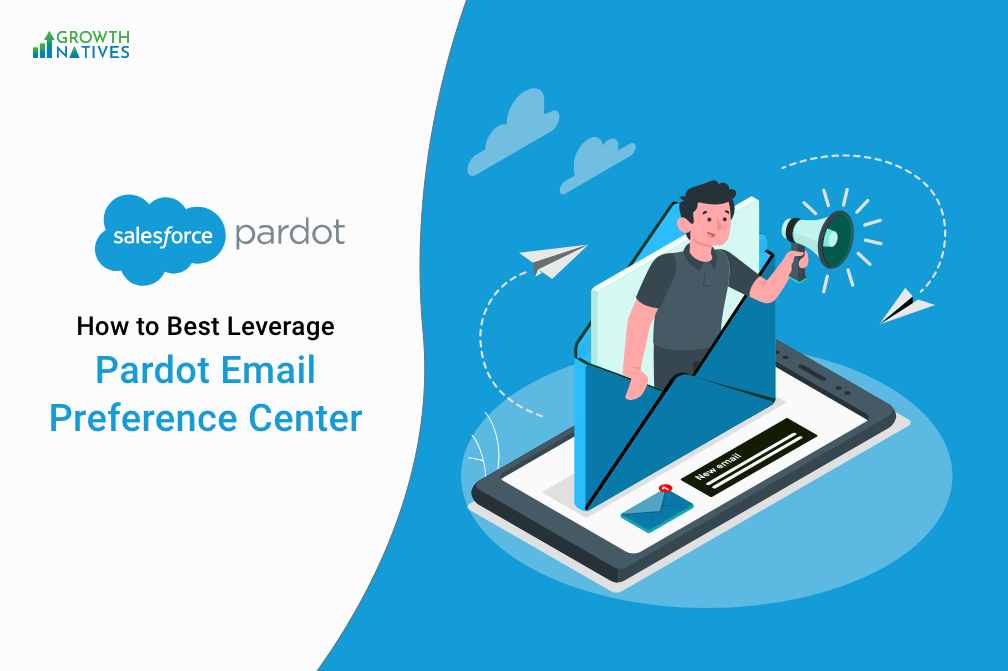
5 Tips For a Successful Pardot Implementation
By Sakshi Arora
Jan 3, 20205 min read
Crawl, Walk, and Run; this is how it exactly goes when working on Pardot Implementation!!
Do you aspire to get the maximum ROI out of your Pardot implementation? Well, everyone does, it's a huge investment in terms of budget and time after all. But the bitter truth is, not all companies who invest in implementing marketing automation meet success. You need to develop an implementation strategy that is pragmatic and can get you off the ground with Pardot quickly.
Considering our own Pardot implementation experience with our clients, we are writing this post hoping it will help Pardot users and aspirants.
Some Worth-Knowing Marketing Automation Stats
- Nearly 50% of marketers admit that they have not been successful in implementing automated email marketing campaigns. - “Marketing Automation Trends for Success”
- 27% of marketing influencers find Marketing Automation/Email/CRM challenging to utilize. - “Marketing Technology Utilization Survey”
- Over 15% of marketers still find creating automation and integration as the biggest challenges with any automation tool. - “Marketing Automation Challenges Report 2019”
Source: Marketing Technology Utilization Survey” (2019)
Here’s What You Need To Ensure To Make Your Pardot Implementation A Success
Identify & Define your Automation Processes
Working with vague or undefined processes while Pardot implementation can drag you into the rabbit hole. The first and foremost requirement for a successful Pardot implementation is - having clear and defined processes.
You can’t expect success until you understand what you want to improve with your automation tool. Do a health check-up of your current marketing and sales efforts and ask yourself the following questions:
- How successful are your sales engagements? How can you improve them to get better qualifying leads?
- Is your website generating enough leads? If no, how can you improve on this?
- Evaluation of your marketing KPIs, and how can you further improve them?
You better have a clear blueprint about the processes you want to automate, but do not rush for it. Define your process, do its IRL testing with humans, and see the results. If you find it fit to roll only, then you should automate it.
Plan For Enough Content Assets
68% of successful marketers give credit to lead scoring based on content and engagement for experiencing improved revenue in their organizations- The Lenskold and Pedowitz Groups.
Ignoring the significance of required content (both in terms of quality & quantity) could be a big hurdle in any marketing automation practice - Pardot implementation is no different. Consider the example of the 'Drip nurturing email marketing campaign' - it requires a large volume of content. If you do not create enough content, you won't reach the goals you have set.
Develop enough content assets, including blogs, Whitepapers, checklists, guides, infographics, etc. that could be used in different campaigns to engage with your audience.
Outline Clear Ownership and Align the teams
Whom does the marketing automation tool belong to? Marketing, IT, or Sales department? Actually, all have a role to play and the success of your Pardot implementation depends on all. Align all your in-house teams and ensure their expertise in handling various Pardot processes. Defining clear responsibility will be way more helpful in implementing your automation tool. In case your team lacks knowledge in marketing automation tools, you can look forward to hiring professional services from Pardot Consulting agencies to bridge the gap.
Be Prepared to face Technical Implications challenges.
Pardot, just like other technology products you use requires technical resources to ensure success with it. Whether you like it or not, you need to have technical resources lined up to handle the technical implementation challenges that will come along by its nature. Activities like integration with your stack, building and managing assets will require technical expertise. If you do not have in house resources hire an expert agency to help with the technical setup.
Make sure the technical issues arising from your Pardot implementation are well documented for future references and maintain technical architecture documentation from day one. With growing Martech stack around your Pardot instance, you will need to refer and build this documentation over time.
Sow the Seeds For Post Implementation Support
⅔ of the companies fail to leverage the lead nurturing capabilities of marketing automation tools because of a lack of resources for post-implementation support. Make sure you have a resource plan and budget in place to have a team that can run Pardot operations and scales when the time comes. Though once set up you can expect the campaigns to run in an automated way you still need to orchestrate the automation. Make sure you have resources that are able to design, build, launch and manage campaigns in Pardot to drive the best results. Periodic training for the team on best practices should also be an integral part of your Pardot success plan.
There you go!!
Save yourself some time by preparing these things before starting with the Pardot implementation. However, having a partner to assist you in Pardot implementation could be a sound bet. You can reach out to our Pardot expert team to know more about ongoing & proactive support. Please write us an email at info@growthnatives.com.




